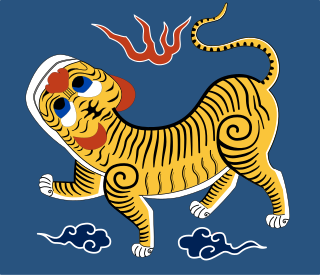 W
WThe Battle of Baguashan, the largest battle ever fought on Taiwanese soil, was the pivotal battle of the Japanese invasion of Taiwan. The battle, fought on 27 August 1895 near the city of Changhua in central Taiwan between the invading Japanese army and the forces of the short-lived Republic of Formosa, was a decisive Japanese victory, and doomed the Republic of Formosa to early extinction. The battle was one of the few occasions on which the Formosans were able to deploy artillery against the Japanese.
 W
WThe Battle of Changhsing, popularly known in Taiwan as the Battle of the Burning Village was the last set-piece battle during the Japanese invasion of Taiwan. It was fought by Hakka militia and armed civilians against the invading Imperial Japanese Army in Changhsing village (長興村). The battle earned its name from the fact that the entire village was burnt to the ground by the Japanese during their attempts to capture it from the Formosans.
 W
WThe Republic of Formosa was a short-lived republic that existed on the island of Taiwan in 1895 between the formal cession of Taiwan by the Qing dynasty of China to the Empire of Japan by the Treaty of Shimonoseki and its being taken over by Japanese troops. The Republic was proclaimed on 23 May 1895 and extinguished on 21 October, when the Republican capital Tainan was taken over by the Japanese. Though sometimes claimed as the first Asian republic to have been proclaimed, it was predated by the Lanfang Republic in Borneo, established in 1777, as well as by the Republic of Ezo in Japan, established in 1869.
 W
WThe Japanese invasion of Taiwan was a conflict between the Empire of Japan and the armed forces of the short-lived Republic of Formosa following the Qing Dynasty's cession of Taiwan to Japan in April 1895 at the end of the First Sino-Japanese War. The Japanese sought to take control of their new possession, while the Republican forces fought to resist Japanese occupation. The Japanese landed near Keelung on the northern coast of Taiwan on 29 May 1895, and in a five-month campaign swept southwards to Tainan. Although their advance was slowed by guerrilla activity, the Japanese defeated the Formosan forces whenever they attempted to make a stand. The Japanese victory at Baguashan on 27 August, the largest battle ever fought on Taiwanese soil, doomed the Formosan resistance to an early defeat. The fall of Tainan on 21 October ended organised resistance to Japanese occupation, and inaugurated five decades of Japanese rule in Taiwan.
 W
WLiu Yongfu (1837–1917) was a Chinese warlord and commander of the celebrated Black Flag Army. Liu won fame as a Chinese patriot fighting against the French Empire in northern Vietnam (Tonkin) in the 1870s and early 1880s. During the Sino-French War he established a close friendship with the Chinese statesman and general Tang Jingsong, and in 1895 he helped Tang organise resistance to the Japanese invasion of Taiwan. He succeeded Tang as the second and last president of the short-lived Republic of Formosa.
 W
WThe Pescadores campaign was the last military operation of the First Sino-Japanese War and an essential preliminary to the Japanese conquest of Taiwan.
 W
WThe Republic of Formosa was a short-lived republic that existed on the island of Taiwan in 1895 between the formal cession of Taiwan by the Qing dynasty of China to the Empire of Japan by the Treaty of Shimonoseki and its being taken over by Japanese troops. The Republic was proclaimed on 23 May 1895 and extinguished on 21 October, when the Republican capital Tainan was taken over by the Japanese. Though sometimes claimed as the first Asian republic to have been proclaimed, it was predated by the Lanfang Republic in Borneo, established in 1777, as well as by the Republic of Ezo in Japan, established in 1869.
 W
WTang Jingsong was a Chinese general and statesman. He commanded the Yunnan Army in the Sino-French War, and made an important contribution to China's military effort in Tonkin by persuading the Black Flag leader Liu Yongfu to serve under Chinese command. His intelligent, though ultimately unsuccessful, direction of the Siege of Tuyên Quang was widely praised. He later became governor of the Chinese province of Taiwan. Following China's cession of Taiwan to Japan at the end of the First Sino-Japanese War (1894–1895) he became president of the short-lived independent country Republic of Formosa.
 W
WThe Treaty of Shimonoseki , also known as Treaty of Bakan in China, was a treaty signed at the Shunpanrō hotel, Shimonoseki, Japan on 17 April 1895, between the Empire of Japan and Qing China, ending the First Sino-Japanese War. The peace conference took place from 20 March to 17 April 1895. This treaty followed and superseded the Sino-Japanese Friendship and Trade Treaty of 1871.